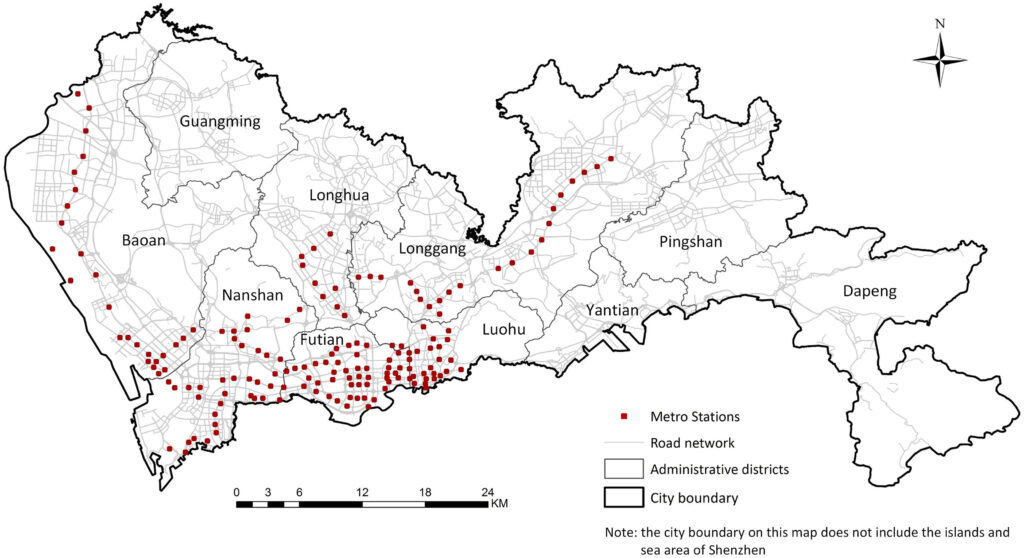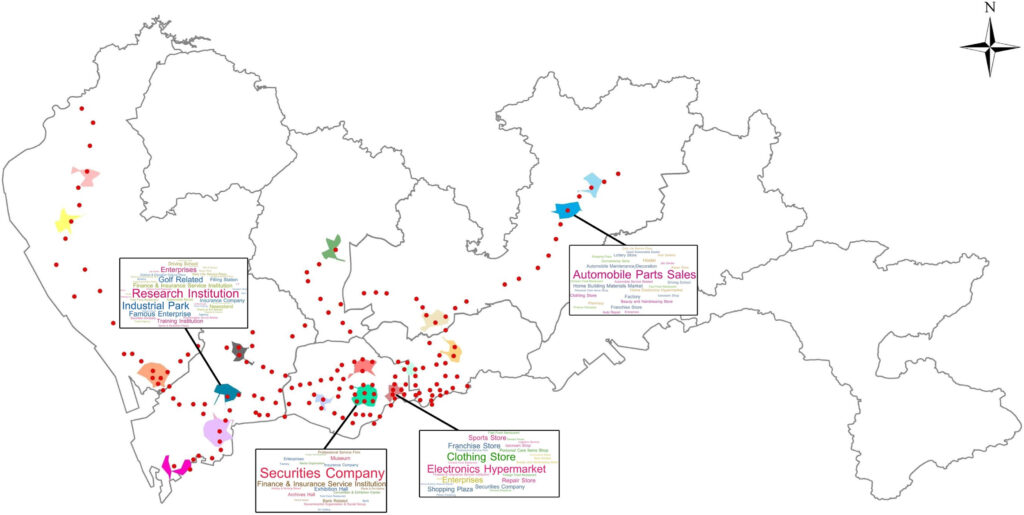New paper published in the journal of Cities.
Kang Liu, Peiyuan Qiu, Song Gao, Feng Lu, Jincheng Jiang, Ling Yin. (2020) Investigating urban metro stations as cognitive places in cities using points of interest. Cities. 97, 102561, 1-13. DOI: 10.1016/j.cities.2019.102561
Link: Map story presentation (open in a Web browser on PC or laptop)

Abstract: The significance of urban metro stations extends beyond their roles as transport nodes in a city. Their surroundings are usually well developed and attract a lot of human activities, which make the metro station areas important cognitive places characterized by vague boundaries and rich semantics. Current studies mainly define metro station areas based on an estimation of walking distance to the stations (e.g., 700 m) and investigate these areas from the perspectives of transportation and land use instead of as cognitive places perceived by the crowd. To fill this gap, this study proposes a novel framework for extracting and understanding the cognitive regions of urban metro stations based on points of interest (POIs). First, we extract the cognitive regions of metro stations based on co-occurrence patterns of the stations and their surrounding POIs on web pages by proposing a cohesive approach combined of spatial clustering, web page extraction, knee-point detection, and polygon generation techniques. Second, we identify the semantics of metro stations based on POI types inside the regions using the term frequency-inverse document frequency (TF-IDF) method. In total 166 metro stations along with more than one million POIs in Shenzhen, China are utilized as data sources of the case study. The results indicate that our proposed framework can well detect the place characteristics of urban metro stations, which enriches the place-based GIS research and provides a human-centric perspective for urban planning and location-based-service (LBS) applications.

Implications for urban planning
As Kevin Lynch stated in The Image of the City (Lynch, 1960), the skeleton of individuals’ mental images is formed by five types of elements in the city: paths, edges, nodes, districts and landmarks, which mediates in the interaction between humans and their environment. The first thing we want to emphasize in this study is that urban metro stations are also one type of such cognitive elements (i.e., landmarks) in cities; their properties as cognitive places should be considered in urban planning and design so as to match people’s cognition. In addition, our extracted cognitive regions of urban metro stations show diverse and irregular shapes, which indicates that unified physical distances frequently used in existing studies and planning practices cannot precisely define TOD precincts perceived by humans. To this end, what we suggest in this study is that urban planning practices should attach importance to “cognitive place” and “cognitive distance”, which load human experiences and perceptions toward the environments (Briggs, 1973; Montello, 1991). This is also coincident with the ultimate goal of urban planning, urban design, and smart-city construction, i.e., making better human societies and improving human lives (Shaw & Sui, 2019).
